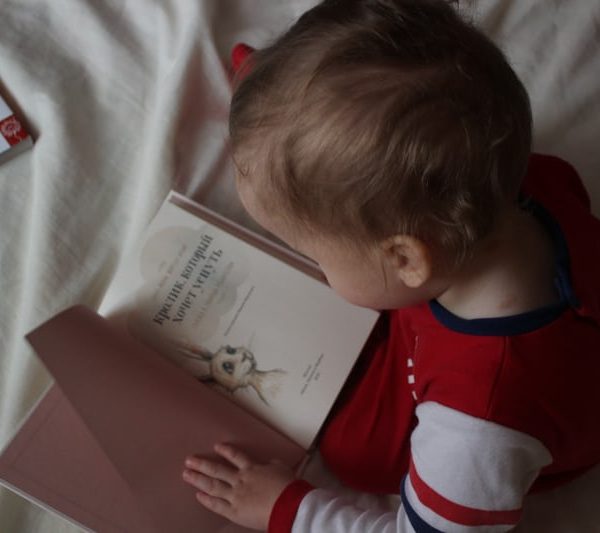There’s more than one good way to teach kids how to read

We are literacy professionals, former reading teachers who now prepare college and graduate students to teach kids how to read.
As scholars, we believe in the study, exchange and debate of ideas. But recently we have become concerned by the direction that the debate about what methods teachers should use to help kids learn to read has taken.
The long-running “reading wars” are flaring again, largely because so many kids are struggling. Only 35% of fourth graders read at or above their grade level, according to the results of a federal standardized test. It’s also an issue because merely 13.5% of American 15-year-olds could distinguish between fiction and fact when they took another assessment, which measures student performance around the world.
Phonics and the ‘science’ of reading
A growing number of influential journalists, dyslexia advocates, politicians and some local school officials argue that there’s only one way to teach reading. They advocate for having all public schools teach phonics between kindergarten and third grade.
Phonics is a method of teaching reading that emphasizes getting kids to decode individual letters and groups of letters and to connect them with the sounds they make, such as connecting the letter “a” with the sound it makes in the words “cat” or “ate.”
This approach was developed in the mid-19th century by experimental psychologists who held that reading was a linear, bottom-up process involving rote learning of letters, sounds, words, sentences, then comprehension.
These days, phonics-first advocates call their favored approach “the science of reading.” They say it has been proven to work through rigorous scientific testing. They dismiss all other methods.
These “science of reading” proponents fail to mention that many methods of teaching reading do include teaching letters and sounds, along with surrounding students with interesting books and exciting texts, building background knowledge and using multiple teaching techniques like shared reading, guided reading and individual instruction.
While phonics, or other teaching strategies, may work effectively in one context, it does not guarantee the same results with different teachers or students. For example, if a child does not learn in a linear way or have the visual or auditory processing skills needed to learn letters and sounds, phonics may not be a reliable approach.
Many methods
Comprehensive methods encompass reading to students often, providing time for students to read, write and talk about texts often, and supporting reading fluency by reading texts repeatedly and teaching kids to combine strategies to figure out words they don’t know.
These strategies include sounding out a word using phonics knowledge, looking at the pictures, skipping the word and coming back to it after reading the rest of the sentence, and thinking about what would make sense.
A comprehensive approach also includes providing time for studying spoken language, including vocabulary and spelling. It also calls for providing explicit comprehension instruction through having kids respond to texts through writing, talking, acting it out or drawing. Teaching higher-order critical thinking skills , such as prediction and reflection about stories, helps kids get the hang of reading as well.
Perhaps ironically and despite the decades-long and sometimes heated debate over what teaching methods work best, there are no reliable data about which methods U.S. teachers use most to teach kids.
And yet in Minnesota and other states lawmakers are seeking ways to force schools to emphasize phonics even though the Common Core State Standards, adopted in 41 states and the District of Columbia, already include phonics instruction.
Skewed media coverage
Many prominent news outlets appear to be taking one side.
Google the term “the science of reading” and you’ll find pages of hits proclaiming the superiority of teaching reading through a phonics-first approach, from National Public Radio, EdWeek, American Public Media, the Great Schools website and The Atlantic, to name a few.
A Dec. 3 EdWeek article by Madeline Will, for example, discusses former elementary teacher’s Mary Sacchetti’s experience using “an intensive phonics based program” to help a second grade student named “Juan.” The boy was identified as requiring special education.
Will indicates that Juan “knew about half of his consonant sounds and none of his vowels.” She reports that Juan made reading gains after phonics interventions, although she doesn’t share the specifics.
The article questions why Sacchetti and other teachers are not always prepared to offer phonics interventions since, Will writes, this approach to teaching reading is rooted in science.
Comprehensive approach
The answer is that other methods for teaching reading are also backed by ample evidence.
The International Literacy Association recently rebutted the phonics-first narrative with a report that synthesized evidence from decades of research on teaching children to read.
Many studies have shown the importance of educators adapting their teaching based on their knowledge of reading practices and a deep understanding of children’s strengths and needs. Other research has indicated that strong schools that support teachers and children over time are key. And additional studies have underscored the effectiveness of teaching reading with a comprehensive approach that includes both phonics and other methods.
Similarly, the National Council of Teachers of English recently issued a Statement on the Teaching of Reading that brought together multiple research studies to define teaching reading as an evolving complex process that cannot be reduced to one skill or a linear set of skills.
This research underscores the important role that learning to understand texts based on your own experiences can play when kids learn to read. It also highlights the importance of a comprehensive approach that includes fluency, oral language, writing, spelling, phonics, vocabulary and comprehension – and that readers learn to read by reading widely.
In addition, kids benefit from reading different kinds of texts, including online, interactive content from web apps or e-books.
Teaching reading
Instead of being forced to step up their reliance on phonics, we believe teachers should use a comprehensive approach and understand an individual child’s strengths, previous knowledge and experiences, languages, ethnic, racial and cultural
backgrounds and other relevant information.
Children’s parents, families and communities know these strengths best and, like teachers, can support children learning to read by frequently and repeatedly reading books popular with children like “Please, Baby, Please” by filmmaker Spike Lee or the “Elephant and Piggie” series by author and illustrator Mo Willems. When parents regularly read to and with their own kids, their children are much more likely to become good readers.
Just like each child, family and teacher grows over time, reading methods should too because there is more than one good way to teach a kid how to read.
[ Deep knowledge, daily. Sign up for The Conversation’s newsletter. ]![]()
Kindel Turner Nash, Associate Professor of Early Childhood Education, University of Maryland, Baltimore County and Leah Panther, Assistant Professor of Literacy Education, Mercer University
This article is republished from The Conversation under a Creative Commons license. Read the original article.
Popular

Workforce
Quality
Research
When did it start to go wrong?
2025-12-18 08:00:46
by Fiona Alston

Economics
Policy
Quality
Provider
Research
Is your service ready? Key updates to Queensland kindergarten funding in 2026
2025-12-17 07:00:15
by Fiona Alston

Quality
Workforce
Practice
Research
Let’s not lose the word 'Children'
2025-12-18 07:45:13
by Fiona Alston















